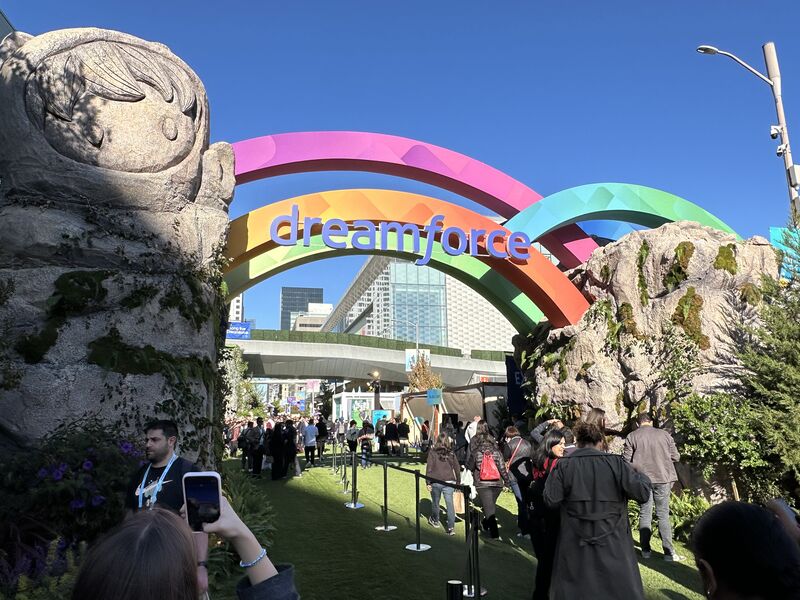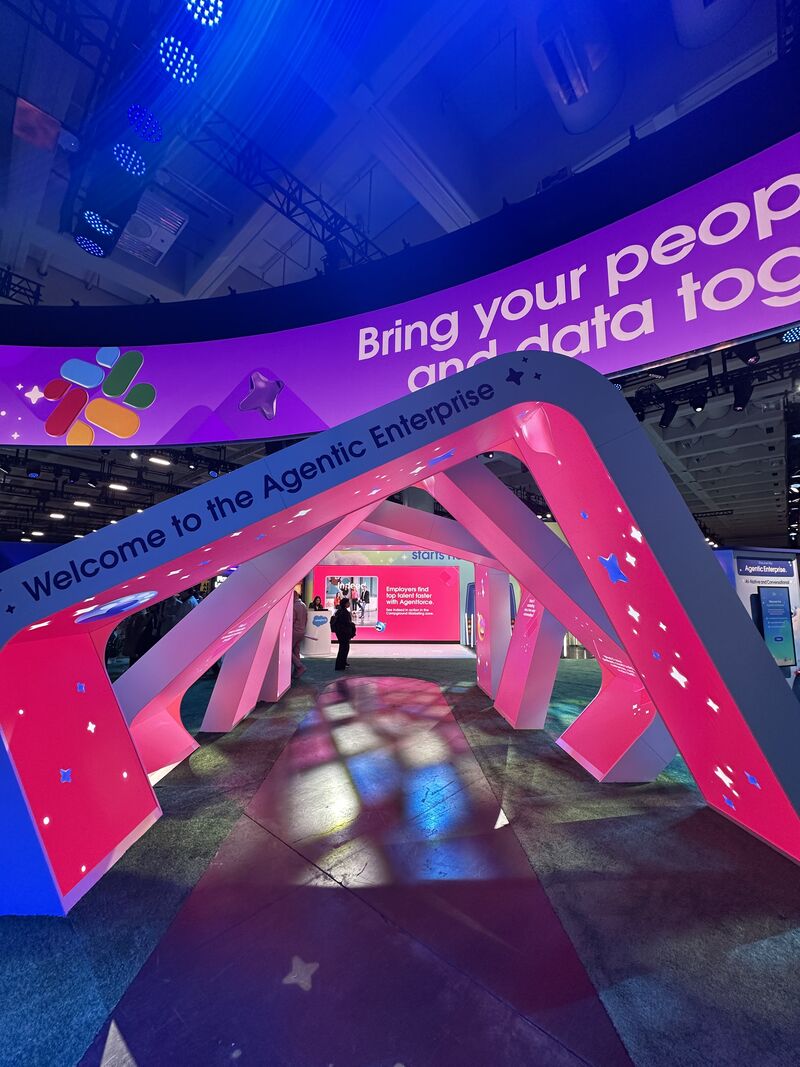The Agentic Future:
Dreamforce 2025 Recap
Overview
This year’s Dreamforce offered a vivid glimpse into the future of AI, Experiences, and business leadership. Paul Stephenson, VP of Client Services at FIRST, attended the 2025 conference and returned with key insights from the Agentic Enterprise keynote and the festival-like atmosphere that defined the event. Two themes stood out above all: the accelerating influence of Artificial Intelligence (AI) and the enduring importance of human connection and leadership.
Key Takeaways:
- Transformational leadership requires cultural change, agility, and continuous learning.
- AI should free teams from administrative work to focus on creativity and client relationships.
- Events function as integrated growth engines when driven by data and digitally connected.



AI in Events: Amplifying Human Capability, Not Replacing It.
The Core Purpose of AI For Event Teams
Key Insight from will.i.am: Using AI to do yesterday’s work faster simply misses the transformative opportunity. The real value lies in eliminating mundane administrative tasks so teams can focus on:
- Creative strategy development
- Deeper client relationship building
- Experimentation and innovation
- Strategic thinking versus tactical execution
But not every AI tool will unlock that impact—many offer similar features, and one size doesn’t fit all.
Action Item: Before deploying AI tools in your event strategy, establish a trust framework that governs all interactions with clients and attendees. Then, test the tools in a controlled manner to ensure they truly enhance creativity, efficiency, and team workflow.
Dreamforce as Experience Design: How Salesforce Built an Event Growth Engine
Events as Growth Engines, Not Moments.
Dreamforce is a masterclass in designing event ecosystems. Salesforce uses the event to drive:
- Strategic storytelling across multiple touchpoints
- AI-personalized content and follow-up journeys
- Connected networking that builds loyalty
- Data capture for more innovative future programming
Intentional Design at Scale
With over 1,500 sessions, Dreamforce creates a sense of FOMO (fear of missing out). This abundance keeps attendees:
- Continuously curious
- Highly engaged
- Likely to return for future events
Complex Navigation by Design: The campus layout encourages discovery mode. Attendees don’t just attend; they explore. This design principle transforms passive consumption into active participation.
Measuring Experience Success
The true metrics of successful experience architecture go beyond attendance numbers:
- Attendee energy levels throughout the event
- Quality of networking connections made
- Post-event engagement and conversation
- Sustained momentum beyond the physical experience.
Observation: Despite crowds and logistical challenges, Dreamforce maintained high energy with attendees showing “smiling faces” and continued connection, the hallmark of an effective experience design.
Leadership in the Age of AI: Lessons From Dreamforce
Insights from Starbucks CEO Brian Niccol and LIV Golf CEO Scott O’Neil spotlighted what modern leadership requires.
1. Culture Drives Transformation
To change a business, start with culture. Event organizations must:
- Prioritize human experience over efficiency
- Encourage experimentation
- Align team values with client impact
2. Operate Like a Speedboat, Not a Tanker
Agile leadership means:
- Surrounding yourself with trusted teams
- Empowering decision-making
- Moving fast without waiting for full consensus
3. Stay a Learning Organization
The higher you lead, the more you must listen. Teams must:
- Avoid complacency
- Invite diverse perspectives
- Treat failure as learning
The Path Forward
Dreamforce made one thing clear: the future won’t be defined by AI alone, but by how humans use it to elevate connection, imagination, and experience. For event leaders, the real opportunity lies not in efficiency—but in reinvention. AI should simplify the operational burden, allowing teams to think bigger, move faster, and design experiences that feel more human than ever. At FIRST, we see this as a call to action: build responsibly, lead boldly, and use intelligent technology to unlock creativity—not replace it. The organizations that will win in 2025 and beyond aren’t those with the most tools, but those with the strongest vision for how to use them.
Engage with FIRST
